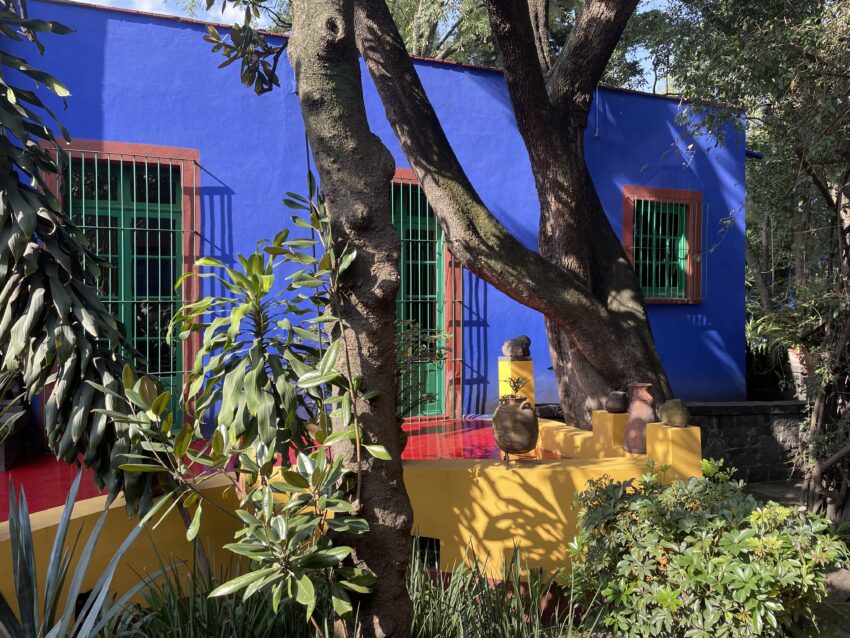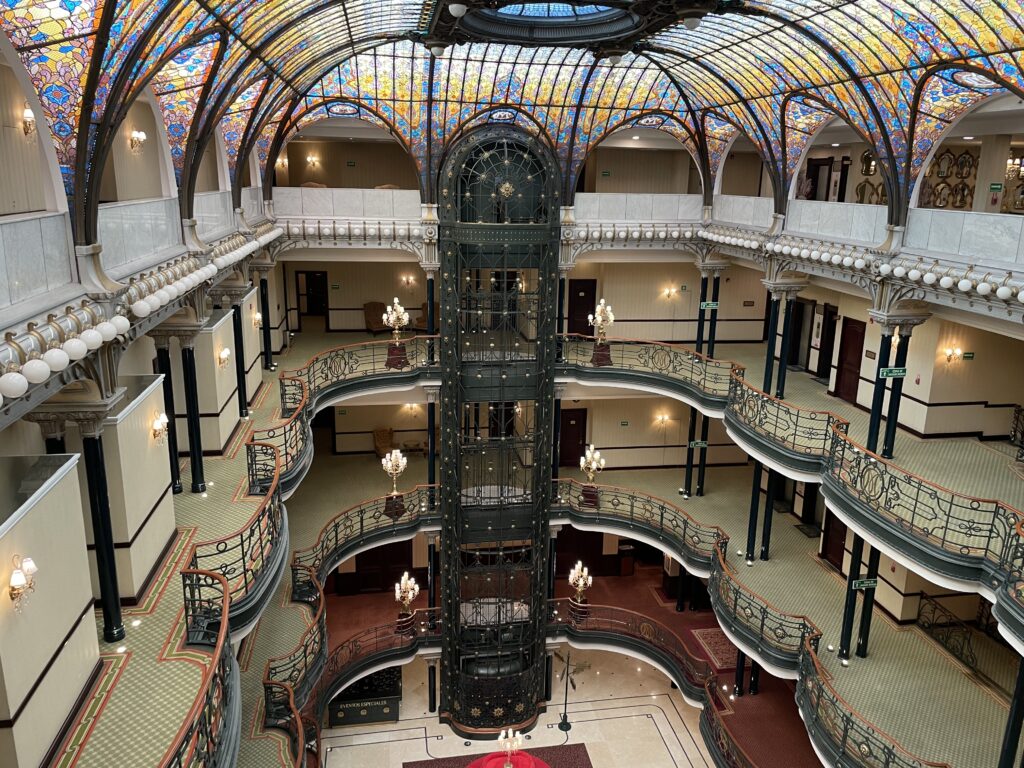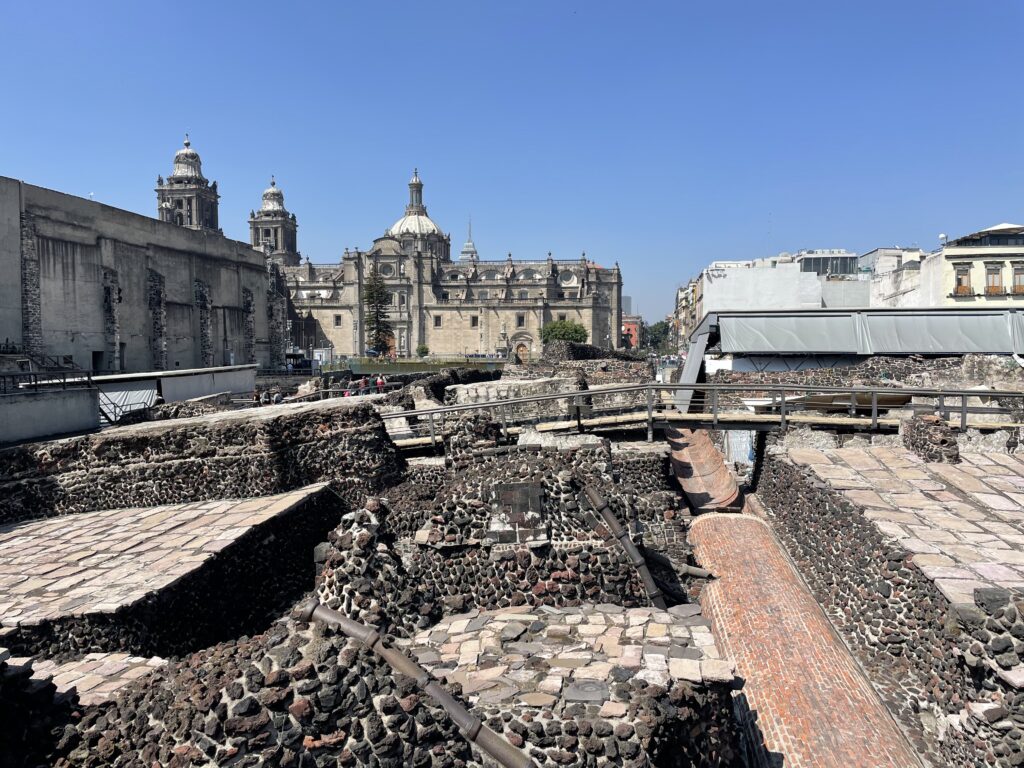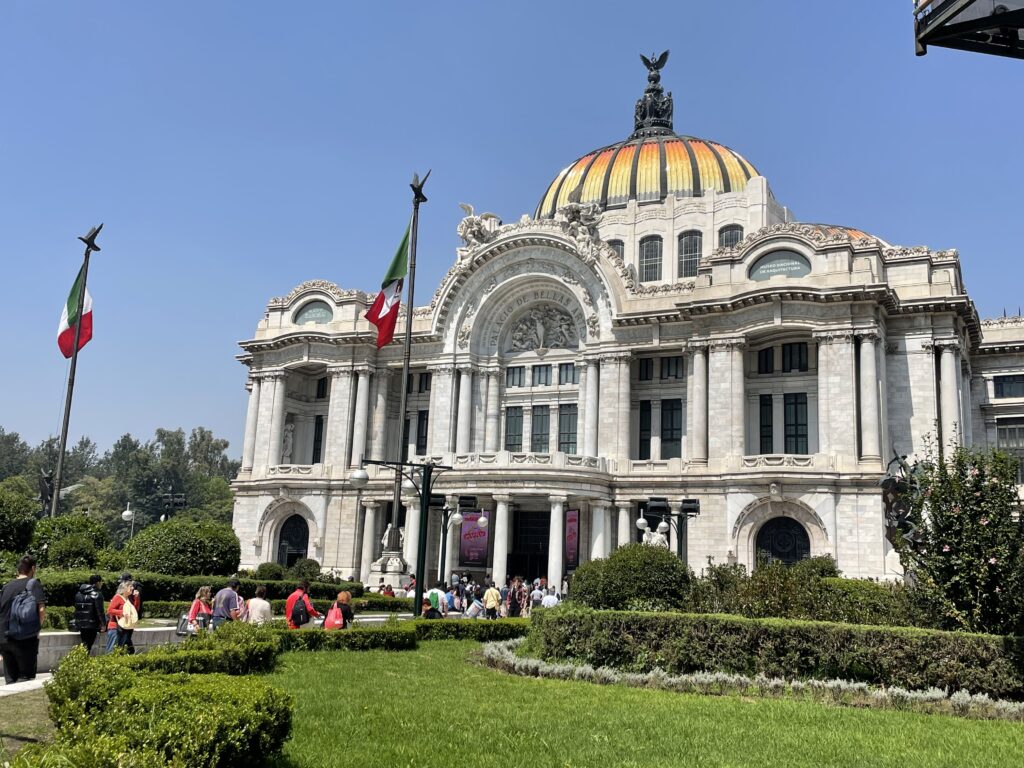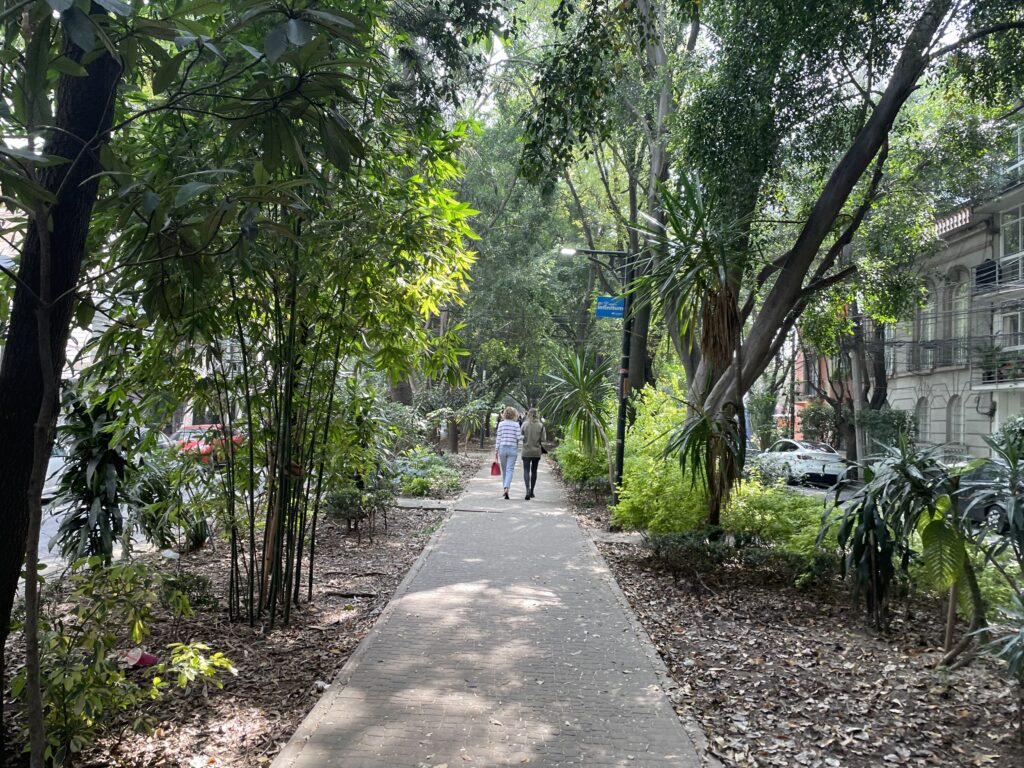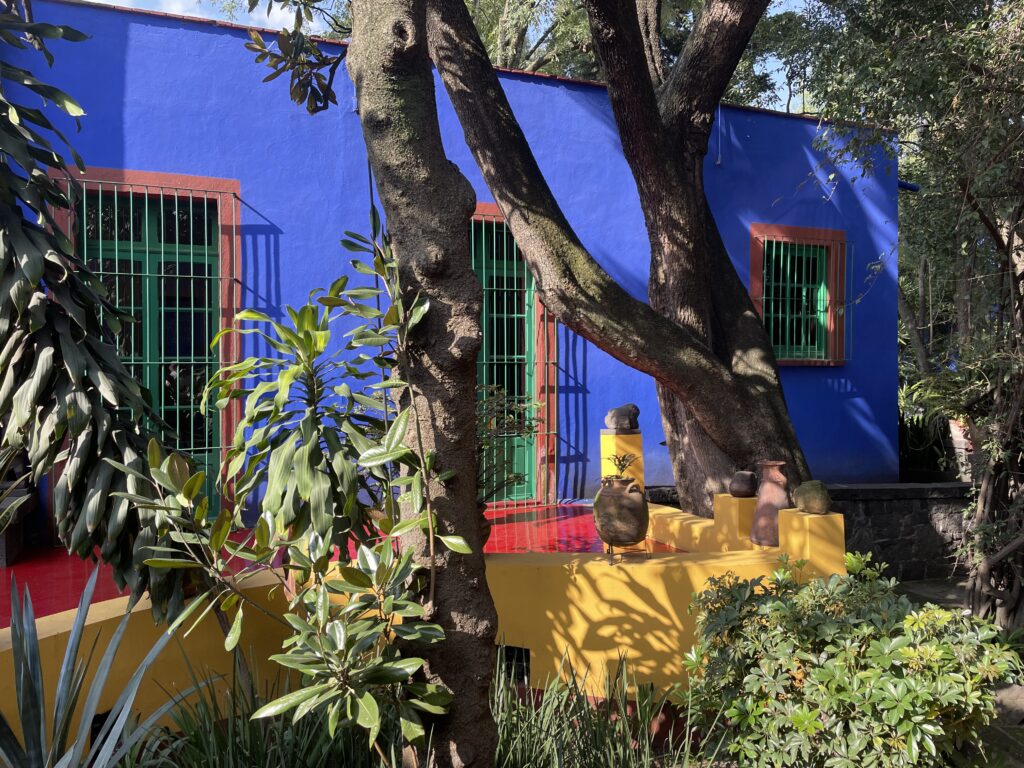There aren’t many cities in the world I’ve struggled to like but Mexico’s capital is one.
Perhaps it’s my age? These days I find it harder to cope with chaos, noise and millions upon millions of people all being in the same place at the same time. It’s one reason I went off London.
Mexico City’s population has boomed in recent years to a staggering 23 million, many of whom seemed to be in the Centro Histórico at the same time as us during our stay. Pavements are crowded, buskers belt out different tunes every five yards and the city’s famous organ-grinders fill the air with out-of-tune melodies. Pollution, car horns, jostling, shopworkers screaming out the latest offers. No wonder my head was spinning.
The first thing to say is that we made a big mistake in choosing Centro Histórico as the place to stay. It may have many fine buildings and some key tourist attractions but it’s just too bonkers, and it’s pretty poor when it comes to a decent choice of bars and restaurants of an evening. Our hotel, the Gran Hotel Ciudad de México, was a true statement piece with its Tiffany-style stained glass ceiling, antique iron lift and sweeping staircase, but the noise from outside was just horrendous and we had to move rooms in order to save me from having a breakdown. Breakfast was served on a terrace overlooking the vast main square or Zocalo – the Plaza de la Constitució – with its unbeatable views of the president’s palace and cathedral. The architecture is astounding, the noise just too much. Fans of James Bond will recognise both the hotel interior – Bond takes the hotel lift during the Day of the Dead celebrations before a typical 007 chase and fight scene around and above the square – from the opening sequence of Spectre.
The best move would’ve seen us in a hotel in one of the city’s quieter districts – Roma, Condesa and Coyoacán for example – with their tree-lined streets, relaxing squares and bustling markets. But hindsight is a wonderful thing.
Centro Histórico and its neighbouring district Alameda Central do have their attractions, if you can get to them through the crowds and the ring of steel thrown up by the largest number of police officers I’ve ever seen in a city. Next to the vast bulk of the cathedral is Templo Mayor, the ceremonial heart of the capital city of the Mexica people known as Tenochtitlan and now part of a UNESCO World Heritage Site. Little remains of what would’ve been an imposing temple and pyramid – thanks to the conquering and destructive Spanish invaders – but there’s an excellent museum with some stunning artefacts illustrating the rich culture, religious practice and history of the indigenous people. Outside it was back to the cacophony. The Zocalo was home to a book fair while we were there but all manner of hawkers, street vendors, indigenous dancers and tarot readers plied their trade in the space that remained, adding to the spectacle and the din.
A walk to the Palacio de Bellas Artes down busy shopping streets passes many typically grand state buildings but the palace is the star – a white marble confection with gorgeous art nouveau and art deco interiors. It houses a number of striking murals and exhibitions, including by local celebrity Diego Rivera, but to me the structure itself was the star of the show. Beyond, it was nice to take a breather in the shaded, renovated park at Alameda where dancing fountains tried to detract from the traffic jams on its perimeter.
The palace, though, is sinking along with countless other buildings in high altitude Mexico City. Look up and you can’t fail to see giant blocks leaning precariously, or entire streets sinking at one end into some unseen mire. It’s all rather alarming, the result of building a capital on a drained lake bed and then, in recent times, draining the underground water sources to satisfy the insatiable demands of a thirsty city. The cost of trying to keep the city upright and to fix the water problem will be immense.
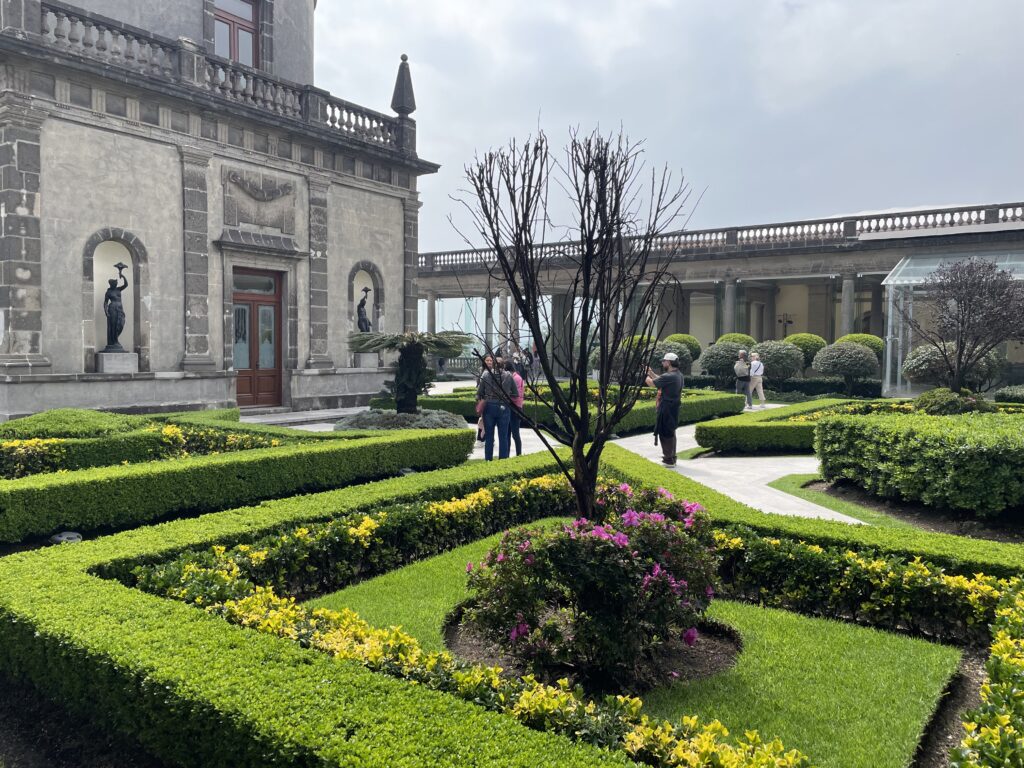
Traffic is another curse of Mexico City. Everybody drives, mostly badly, and impatience is clearly a virtue. The roads are in a terrible state, the jams endless, people cut each other up with reckless abandon and you can taste the pollution in the air. We travelled to most places by Uber because it’s cheap, safe and reliable but some journeys took forever. The metro was fine out of rush hour.
Uber took us to the green oasis of Chapultepec, a vast open space in the city centre that’s also home to several cultural institutions. It’s popular with locals looking for a breath of fresh air and we joined them on the climb up the hill to Chapultepec Castle on a particularly busy Sunday, when admission is free to locals. Once a summer retreat for the country’s leaders, the castle houses a history museum that’s somewhat pointless if you can’t read the Spanish blurb on the exhibits. We got carried through on a wave of humanity and found ourselves on a tour of the rooms once occupied by presidents and the doomed Emperor Maximilian in the 19th century. This section was much more successful and enjoyable, the descriptions multilingual and the grounds well tended. The views across the hazy city were magnificent.
The handsome districts of Condesa and Roma are a short walk away down the hill. Much gentrified and with delightful tree-lined streets, these areas are a great antidote to the historic centre. We wandered through Parque España to Parque Mexico and then along the shaded path that runs down the spine of the oval-shaped Avenida Amsterdam. The architecture in the area is uplifting and colourful and there are plenty of lovely boutiques, cafes and craft beer bars around and about. I was reminded of Buenos Aires. Nearby Mercado Roma has a collection of bars and eateries although it was pretty dead when we visited and, sadly, I had a miserable experience at a seafood restaurant in Roma that we’d seen feted on a TV show.
Much more successful was a food tour that began in Roma with the excellent Viri from the women-owned Devoured tour company. We spent four hours around lunchtime stuffing our faces with tacos and other local treats while learning about the local food culture, starting with the seasonal sweet bun known as the Pan de Muertos. We stopped at several street vendors en route, jumped on the metro to visit Mercado Jamaica and finished with churros in the Centro Histórico. There’s barely a square foot of pavement space not occupied by a street vendor in Mexico, which is quite obviously a country of entrepreneurs. Food, toys, clothes, jewellery, books – you name it, someone is selling it. And if there’s no space on the pavements they’re driving round selling stuff from the boots of their cars whatever hour of the day or night, loud-speakers blaring out to announce their imminent arrival. Mercado Jamaica spills out on to neighbouring streets with vendors and is an explosion of colours and scents, thanks in part to its substantial flower market. With the Day of the Dead and Halloween approaching, numerous stalls were selling a dazzling selection of costumes and decorations. Pots of orange marigolds were being snapped up by the hundred and filled the streets and stairways at all the stops on our Mexican holiday.
Coyoacán is far less frenetic and has its own busy market. The district, a standalone village until not too long ago, is charming and the Avenida Francisco Sosa is justifiably famous for its beautiful historic buildings and mature trees. At the start of the street is the quaint San Antonio de Padua Chapel and a hump-backed stone bridge that seem totally out of place in modern Mexico City, especially as they stand just yards from a major freeway. We walked its length, stopping for lunch at the modest square by the yellow Chapel of Santa Catarina, watched the world go by and then wandered over to the Jesús Reyes Heroles cultural centre over the road, which had a pleasant garden. At the other end of the street we found the Jardin Centenario and the busy centre of Coyoacán, while a diversion north took us to the Museo Frida Kahlo. The home of the famous Mexican artist is one of the most popular stops on the city tourist trail so we had to book timed tickets and put up with a somewhat crowded space but it’s done very well, there’s plenty of art to admire and the English translations are excellent. The gardens are well-tended too.
Mexico City airport was our final stop; a flight to hot and humid Mérida and the Yucatán Peninsula taking us onwards from the dry, cooler air of the capital…

